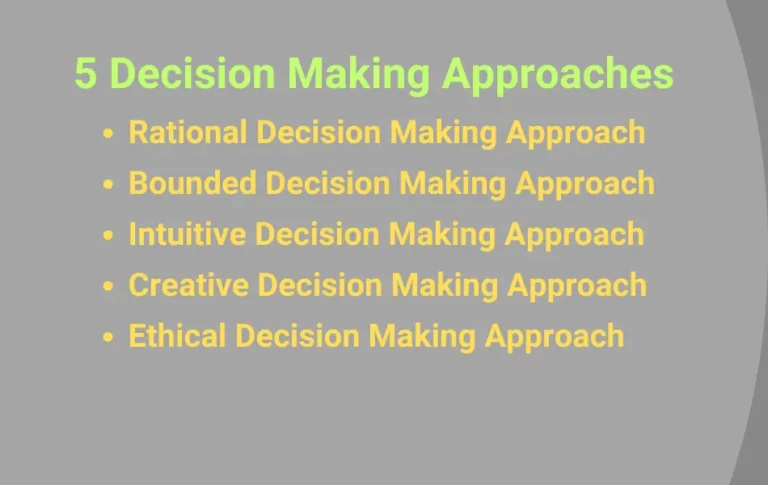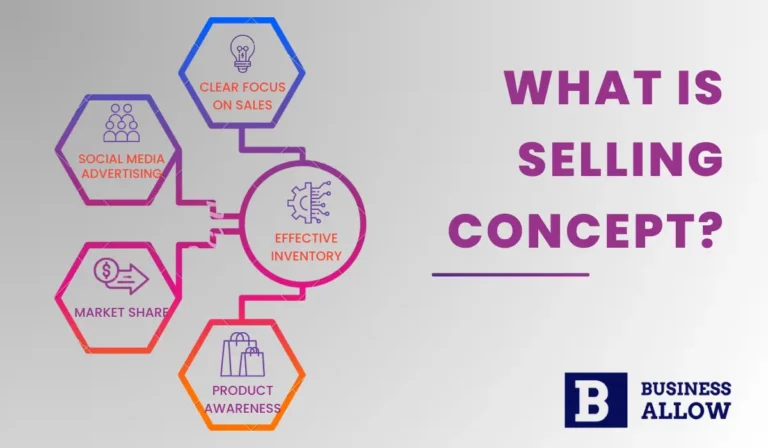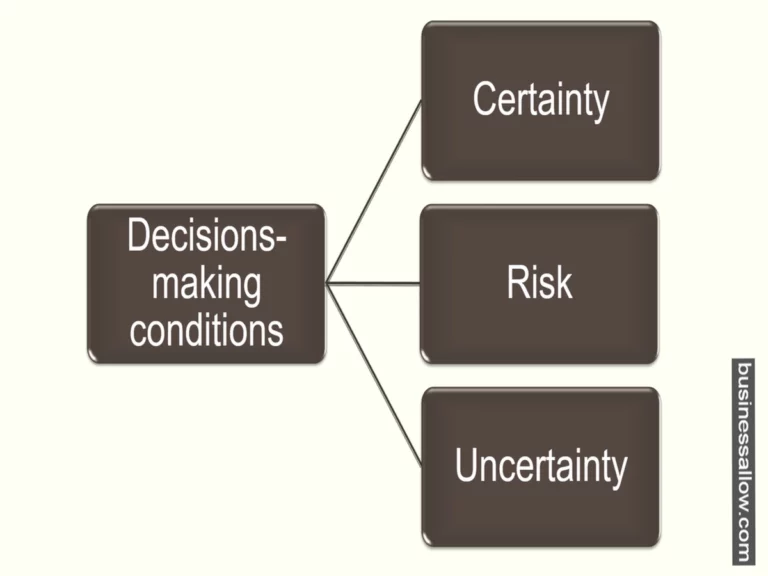Characteristics/Features of Decision Making – Explained 2024
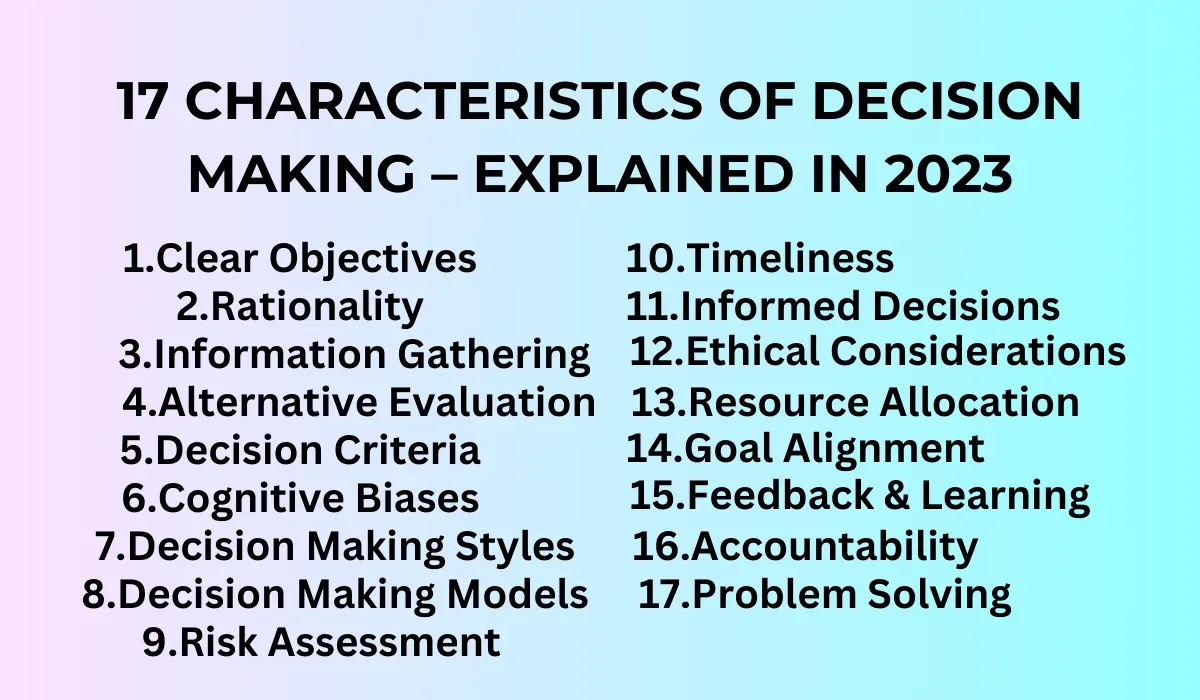
Decision making is a cognitive process involving the selection of a course of action from several alternatives. It plays a pivotal role not only in our personal lives but also in business scenarios, with the potential to bring success or failure. That’s why understanding the characteristics of decision-making is crucial. So, let’s unpack the features of decision making that will bring you one step closer to success in your personal and business lives.
Content Outline
Features of Decision Making – Top 17 Explained
Right decision making is very integral part of every individual or organisation. Here I have explained 17 features of decision making that every individual should follow in his/her personal and professional lives of 2024.
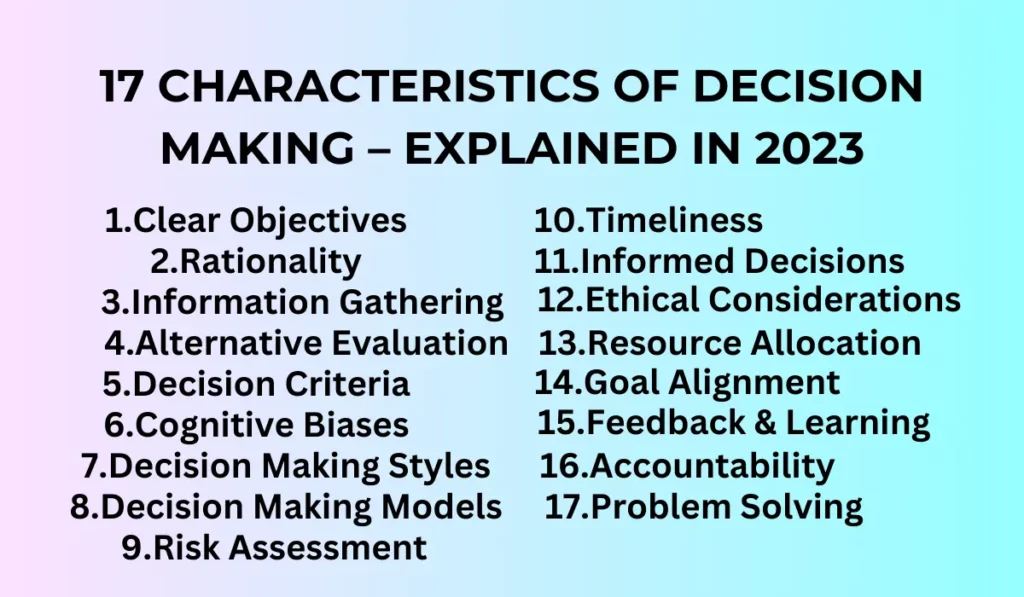
1. Clear Objectives:
In the beginning stages of decision making, it’s like charting a course for a journey. You start by figuring out what you want to achieve with your decision. Think of it as setting your destination on a map. These clear objectives act as your trusty guide, giving you a specific direction to follow in the decision making process.
They’re like the beacon that lights up your path. Whether your goal is to boost profits, grab a bigger slice of the market pie, or iron out a pesky conflict, having clear objectives is like having a clear roadmap. It not only helps you choose the right path but also provides a handy measuring stick to gauge how effective your decision turns out to be.
2. Rationality:
Rationality is the logical, systematic approach to decision making. It involves logical reasoning as well as the systematic study of available options to choose the best possible course of action. Rational decision-making involves analysing all available data, predicting outcomes of various alternatives, and choosing the most beneficial option.
3. Information Gathering:
When making decisions, it’s really important to gather all the right information. Think of it like when you’re planning something important or having a big discussion – you need to know all the facts. Getting the right info is like building a strong base for your decision. It’s a bit like doing some detective work, where you look stuff up, talk to people who know, think about what happened before, and use tools to help you understand. Doing all this helps you get the full picture and make smart choices that aren’t just guesses but good decisions.
4. Alternatives Evaluation:
When you’re making decisions, it’s like considering different options before you pick the one that’s best. Think of it as choosing between different snacks. You need to check each one to see if it’s tasty and healthy. So, in decision making, you look at all the choices and see how they match up with what you want to achieve. This way, you’re less likely to make a wrong choice, and your decisions become better. It’s a bit like making sure you get the best snack for your snack time.
5. Decision Criteria:
Decision criteria refine the decision making process. They are the specific factors or variables considered necessary for making the decision. These criteria help narrow down the list of options and make decisions more effectively.
6. Cognitive Biases:
Cognitive biases are inherent thinking errors that humans make in processing information. These biases may affect the decision making process by causing us to be irrational or make decisions that are not in our best interest. Examples include confirmation bias, hindsight bias, overconfidence bias, etc.
7. Decision-Making Styles:
Decision making styles are the manner in which an individual or organisation typically approaches the decision-making process. Every person or organisation might have a different style. They can be autocratic, democratic, collective, or consensus-based.
Related: decision making styles
8. Decision-Making Models:
There are many models of decision making, each offering its approach to reach the best decision. These models, such as the rational, intuitive, or even creative decision-making models, provide structured frameworks that guide decision-makers, especially in intricate or uncertain scenarios. Employing a model encourages a more disciplined and coherent method, enhancing the quality and consistency of decisions.
9. Risk Assessment:
Assessing potential risks or uncertainties associated with each option is crucial. Risk assessment helps measure, identify, and analyse the risks and determine how they can be avoided or managed.
10. Timeliness:
Making swift and prompt decisions plays a vital role, particularly when dealing with time-conscious situations. Decisions should ideally be reached within an appropriate time frame to capitalise on opportunities or mitigate problems. Delayed decisions could lead to missed possibilities, escalated problems, or lost viability of potential solutions.
11. Informed Decisions:
Decisions grounded in factual information and data are often more reliable and objective. Utilising accurate, up-to-date information to inform your decisions helps reduce erroneous judgments premised on assumptions or biases. Informed decisions bring credibility to the decision-making process and usually lead to better outcomes.
12. Ethical Considerations:
Decisions should be ethical and respect values and regulations. Without ethical decision-making, organisations risk the loss of credibility, legal issues, and a negative corporate culture.
Related: importance of business ethics
13. Resource Allocation:
Effective decision making also considers the allocation of resources. Decisions should take into account the resources (like time, money, personnel, equipment) available or needed to implement the decision.
14. Goal Alignment:
Decisions taken should align with the overall objectives or goals of the individual or organisation. They should contribute towards achieving these goals rather than deflecting from them.
15. Feedback and Learning:
Decision making should be a learning process. Feedback from previous decisions should inform future decisions to increase effectiveness and avoid repeating mistakes.
16. Accountability:
Accountability in decision making involves being responsible for the decisions taken. Effective decision-makers own their decisions, acknowledging and accepting the consequences of their choices, whether positive or negative.
Each of these features impacts the decision making processes and its quality, thus understanding these aspects is key to making more effective and rational decisions.
17. Solves Specific Problems:
Solving specific problems can be a valuable part of decision making features. Effective problem-solving, along with considering other factors like evaluating different options, thinking about what might happen, and setting clear goals, can boost the chances of making successful decisions. In this way, incorporating problem-solving increases the likelihood of making smarter choices, which promotes overall success.
Wrap Up The Features of Decision Making
All these above characteristics of decision making are related to each other. And the last feature (solves specific problems) is definitely the end product of right decision-making. Understanding and incorporating the key features of decision making, such as gathering information, criteria evaluation, risk assessment, and ethical considerations, are crucial to making optimal choices. By utilising these features of decision making, organisations can minimise the risks of bad decision making, enhance stakeholders’ participation, and improve decision-makers’ accountability. Effective decision-making, therefore, relies on the implementation of these key features and making informed choices to achieve the best possible outcomes.

